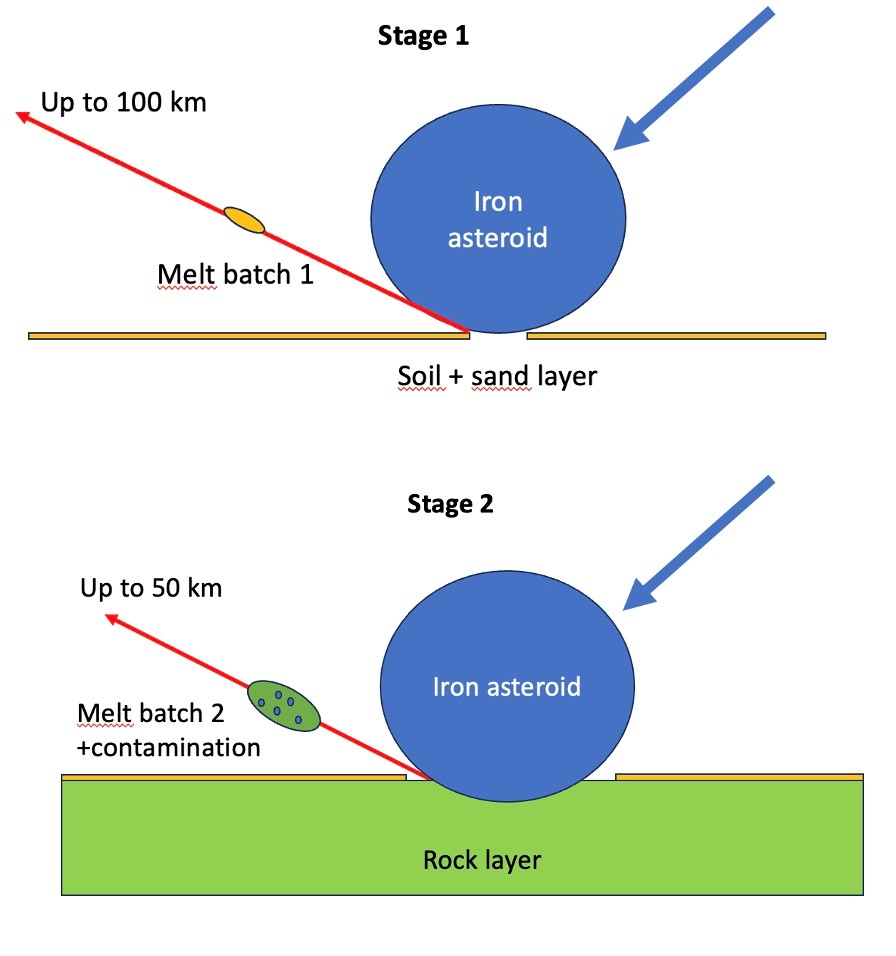A two stage impact melting process in the impact glass strewn field from the Atacama Desert (Chile)
Hypervelocity impacts of asteroids and comets have become an accepted geological process that played an important role in the early evolution of the Earth and the solar system in general. These catastrophic events may induce sudden major environmental and climate changes on Earth, causing sudden mass extinctions. Hypervelocity impacts on the Earth surface produce melts that can be ejected away from the crater at distance varying from a few hundred meters to more than 10,000 km. Chemical and isotopic compositions of impact melts may reflect provenance from the upper layers of the crust, variably contaminated by the extraterrestrial impactor, and showing variable compositions mimicking the heterogeneity of the target. Exploring the variabilities in the melt composition, target depth, and meteoritic contamination may help to understand details in the initial interactions between the impactor and the Earth surface.
A new type of silica-rich glass has been discovered associated with the known impact glass strewn field of the Atacama Desert. A new high-precision age of 6.578 ± 0.011 Ma has been obtained on this previously known event using the multicollector 40Ar/39Ar laser dating. Due to the very low K content, the silica-rich glass age is less constrained (6.87 ± 0.62 Ma). Based on petrography, chemical composition and indistinguishable 40Ar/39Ar age, the two glasses were produced by the same impact event, which gave rise to two successive compositionally different melt batches in close succession. The first one is a silica-rich melt derived from a mixture of quartz sand and weathered magmatic rocks. It is reduced and devoid of extra-terrestrial contamination. The second one, much more abundant (several thousands versus less than a hundred specimen recovered) and corresponding to the normal glass, is oxidized, highly contaminated by the iron type impactor and derived from an underlying un-weathered dacitic rock. The formation scenario sheds a new light on the first second of the interaction between the Earth surface and a large metallic asteroid.
Bibliographic reference
Rochette P., Di Vincenzo G., Gattacceca J., Barrat J.A., Devouard B., Folco L., Musolino A., Quesnel Y. (2024). A two stage impact melting process in an impact glass strewn field from the Atacama Desert. Geochemical Perspective Letters 30, 28–33. https://doi.org/10.7185/geochemlet.2418.
For information: Gianfranco Di Vincenzo, CNR-IGG (gianfranco.divincenzo@igg.cnr.it).
